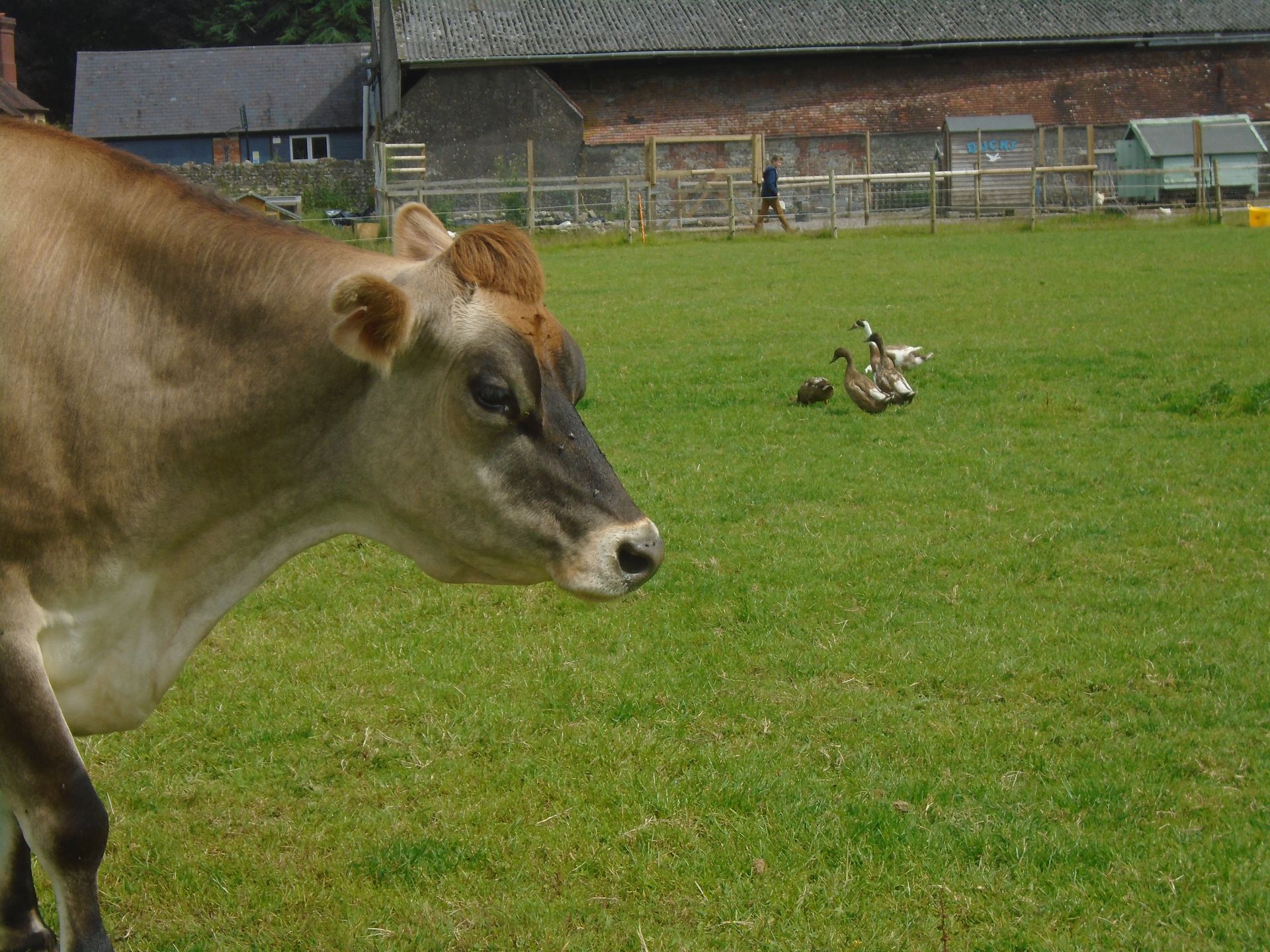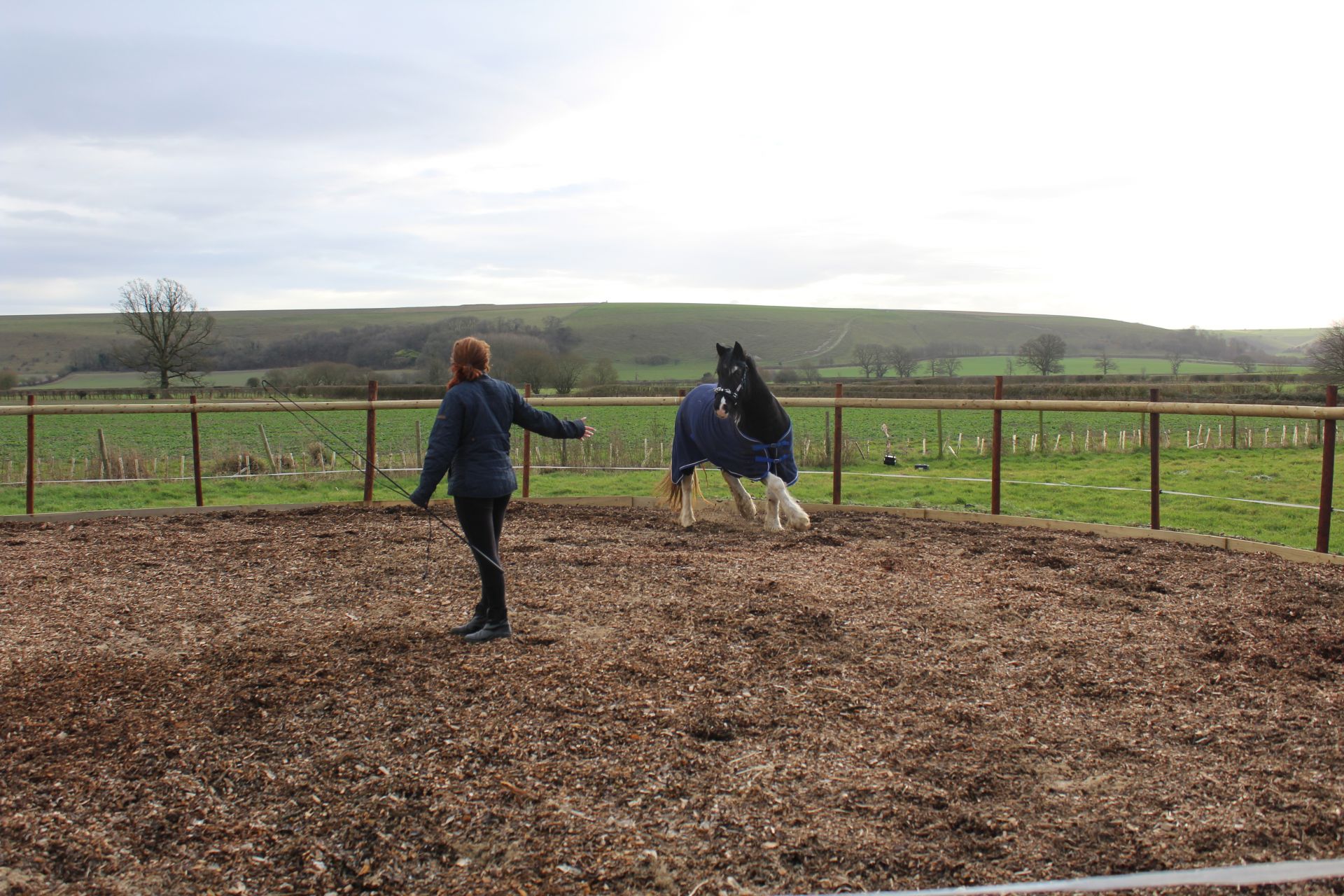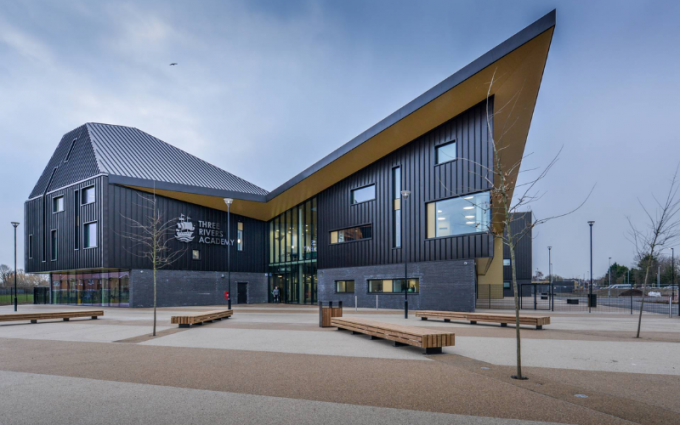By Leah Roberts, outgoing Inclusion and Engagement Lead at Wessex Lodge School

One of our sites is also a farm, which enables young people to access a range of relational strategies for regulation and to develop skills through activities including: equine-facilitated learning; land-based studies; design technology; art; horticulture; outdoor education and home cooking skills. 
My Thrive journey, and that of the school, began in 2019, when myself and a colleague were invited to undertake the Adolescent Licensed Practitioner® training. We both saw the immediate benefit for young people in our school, particularly in the creative subjects we taught. The student population at that time were very resistant and Thrive became a dirty word for a while, which made delivery and engagement tricky. This was, of course, a reflection of their anxiety about the perception they would be talking about their feelings. Some staff also struggled to see the benefits and, on reflection, I recognise that for anyone to truly embrace Thrive, they need to step outside of their window of tolerance and often face some uncomfortable experiences themselves.
"Thrive® is the foundation of everything we do here"
.jpg) However, with some structured CPD created to embed the Thrive Approach® for our setting and some daily pushes in our morning briefing, we were able to demonstrate its relevance and meaning. With all students having Education Health and Care Plans (EHCP) and gaps in their social and emotional development, the Thrive-Online® planning tool gave us strategies to support pupils’ needs. Ultimately, it also gave us a format for developing a bespoke timetable which meets the needs of young people in their reality on any given day and in any given moment. The relief for teachers was evident when we could demonstrate that some young people needed to play and explore in order to build relationships before stepping in to a formal classroom setting. Students soon started to see the benefit of Thrive as an approach and embraced the fun they were having during their sessions. When asked recently what he likes about Thrive, one of our school’s Thrive student ambassadors replied: ‘I know I don’t like it when I don’t have it!’ Several of our students were able to demonstrate, when they were in discussion with Ofsted ,that Thrive is key to them engaging with learning. We have since identified three students in school to be Thrive ambassadors.
However, with some structured CPD created to embed the Thrive Approach® for our setting and some daily pushes in our morning briefing, we were able to demonstrate its relevance and meaning. With all students having Education Health and Care Plans (EHCP) and gaps in their social and emotional development, the Thrive-Online® planning tool gave us strategies to support pupils’ needs. Ultimately, it also gave us a format for developing a bespoke timetable which meets the needs of young people in their reality on any given day and in any given moment. The relief for teachers was evident when we could demonstrate that some young people needed to play and explore in order to build relationships before stepping in to a formal classroom setting. Students soon started to see the benefit of Thrive as an approach and embraced the fun they were having during their sessions. When asked recently what he likes about Thrive, one of our school’s Thrive student ambassadors replied: ‘I know I don’t like it when I don’t have it!’ Several of our students were able to demonstrate, when they were in discussion with Ofsted ,that Thrive is key to them engaging with learning. We have since identified three students in school to be Thrive ambassadors.
After two years, with lots of staff changes and the inevitable influx of new students, we were ready to consider assessment under the Thrive Ambassador School scheme. We initially looked at three areas: we felt confident we were meeting the Reparative needs of our young people as this is our focus due to their complex needs. In addition, we recognised that we met many of the Environment criteria, particularly the farm. Relationship is always our focus as we recognise that relationships are the key to success. However, when our Relationship Manager Eva-Marie Ford visited us to undertake the assessment I was thrilled when she said we should apply for the Leadership and Right-Time awards as well. We were delighted to be named as an Ambassador School in all five areas. Here’s an overview of how we met the criteria for each of the five areas.
Relationship
We take relationship-building very seriously at Wessex Lodge – it is the foundation from which we support the development of resilience. The principle of ‘safe adult/safe space’ is key to young people feeling settled on site. Due to the nature of our pupils’ needs, that relationship extends to families and carers; with around 50 per cent of pupils on roll being in a foster or residential care setting. We meet every student at the door on arrival and allocate specific adults to mentor them. We role model and use the Vital Relational Functions (VRFs) and Playfulness, Acceptance, Curiosity and Empathy (PACE) intuitively and identify the importance of the relational stance as part of individual support plans. Students have access to toast and drinks across the day so that adults can nurture them and all adults are alongside students at break times and lunchtime. Relationships with families and carers are just as important and we share successes and struggles at the end of each day to ensure we have a transparent approach to communication. Families are often involved in reparation after serious incidents and we have several students whose reward systems cross over between home and school.
Right-time
As a mostly reparative school, we have had to be creative about how we meet group Right-Time needs. We don’t have large classes (the largest learning group being four) so the Personal, Social, Health and Economic curriculum, with age-related learning, has sat alongside Right-Time work. Making this work was a challenge and Eva-Marie (our Relationship Manager) supported us to think outside the box with this one, which resulted in having a community target for each half term – one for each site, which is based on the average age of all students in each group (around 17 in each) and allows us to give extra focus on specific difficulties they may be experiencing within school, ie bullying or following non-negotiable rules.
Reparative
We now have Childhood and Adolescent Licensed Practitioners with another two in training. This means all of our young people have access to regular one-to-one sessions and we can work on reparative targets throughout the school day. Thrive Licensed Practitioners also support the inclusion and engagement of students and carry out reflection work at home and as part of our off-site education programme. Both sites have Thrive space for one-to-one work and for students to use to drop in to or as a safe space when feeling dysregulated. The conversations that happen around young people’s presentations always start with how to support them to feel safe. The sheer size and location of the farm, in particular, can be quite overwhelming for some young people.
Leadership
As a member of the leadership team I guess I am in a privileged position to be able to embed the Thrive Approach® from this stand point. I delivered several sessions with our SLT around recognising triggers and responses in ourselves and each other and how we regulate to bring ourselves back to our windows of tolerance. It was uncomfortable at times but I can see how effective it was for SLT being able to keep the needs of the child in mind when we’re discussing distress and dysregulation. This has helped inform our revised policy to support positive behaviour, which includes the relational stance and numerous elements of the Thrive Approach.
Environment
 We are blessed – literally. One of our sites is a farm in the middle of the Deverills, in Wiltshire, and it’s idyllic, even during the winter when day-time temperatures can be sub-zero. Students often come to us with a vested interest in working with animals and this allows us to make effective use of them as co-regulators. I’ve noticed over the last few years that having such a ‘Doing’ element to our curriculum enables young people working at the ‘Being’ stage to also work with ‘Doing’ and make rapid progress. Our other site provides a more containing structure environment for younger student who can manage in small groups. We have safe spaces across both sites and allocated Thrive space for one-to-one and drop-in sessions.
We are blessed – literally. One of our sites is a farm in the middle of the Deverills, in Wiltshire, and it’s idyllic, even during the winter when day-time temperatures can be sub-zero. Students often come to us with a vested interest in working with animals and this allows us to make effective use of them as co-regulators. I’ve noticed over the last few years that having such a ‘Doing’ element to our curriculum enables young people working at the ‘Being’ stage to also work with ‘Doing’ and make rapid progress. Our other site provides a more containing structure environment for younger student who can manage in small groups. We have safe spaces across both sites and allocated Thrive space for one-to-one and drop-in sessions.
It’s not the Ambassador School logos that please me – although they do look great on the school website! It’s the absolute satisfaction of knowing that Thrive is at the heart of everything we do here. It feels right in a setting like this and it helps adults to be alongside each other, as well as to be emotionally-available for young people. I am handing over the mantle to a new Thrive Lead for September and imagine she will see the potential for taking the school’s staff wellbeing agenda to a new level with Thrive at the heart – a really positive next step.
"It’s not the Ambassador School logos that please me – although they do look great on the school website!"
Pass it on
Small actions can lead to a big ripple effect. If you enjoyed this post or found it helpful, please consider supporting us in our mission to help every child and young person feel safe, supported and ready to learn by sharing it using the social media buttons below.
Want to join a like-minded community of senior leaders and classroom staff benefitting from insights and strategies to improve attendance, behaviour and attainment? Add your email address below. (It’s easy to unsubscribe).

_680.jpg)
_680.png)
_680.jpg)

